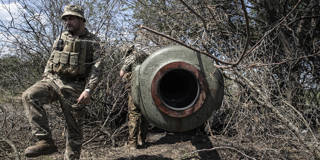After suffering a catastrophic defeat in its initial attempt to take Kyiv and Kharkiv, in recent months Russia gained some territory in Ukraine’s eastern Donbas region. But on both the military and economic fronts, the war has turned south for the Kremlin.
WASHINGTON, DC – It is easy to see who is losing the most from the Russian invasion of Ukraine: Ukrainian civilians, victims of war crimes and missile terror, and the millions around the world for whom food is now more expensive, because Russia has until recently been blocking Ukrainian grain shipments through the Black Sea (and launching strikes on Ukrainian ports even after agreeing to a ceasefire). But who exactly is winning from this dreadful conflict?

WASHINGTON, DC – It is easy to see who is losing the most from the Russian invasion of Ukraine: Ukrainian civilians, victims of war crimes and missile terror, and the millions around the world for whom food is now more expensive, because Russia has until recently been blocking Ukrainian grain shipments through the Black Sea (and launching strikes on Ukrainian ports even after agreeing to a ceasefire). But who exactly is winning from this dreadful conflict?